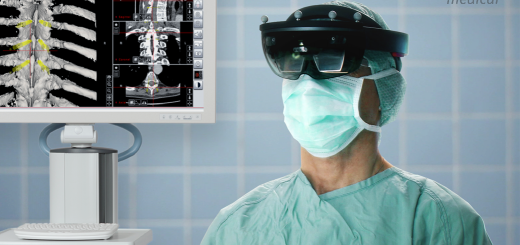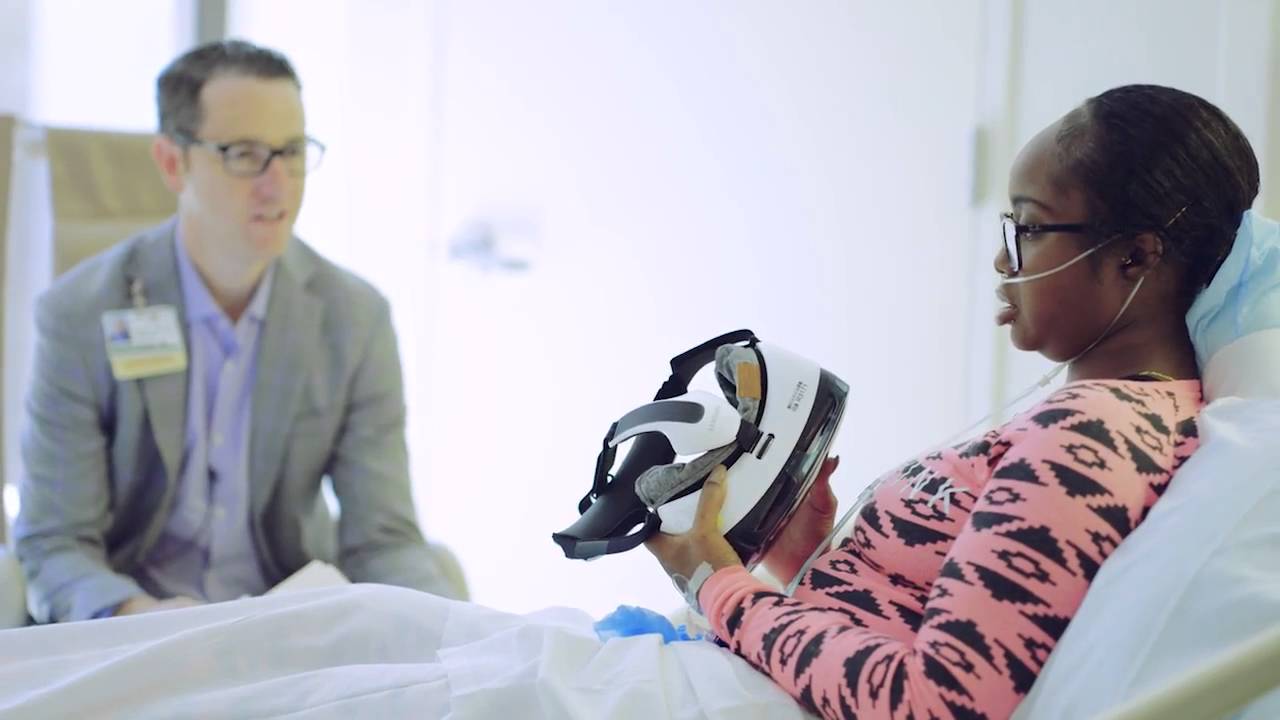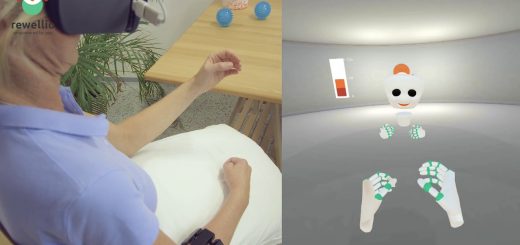Music + VR = Respiratory Therapy in Quadriplegics
Spinal patients sing to breathe easy in virtual world
Researchers are using virtual reality technology and music therapy to get quadriplegics singing together for their health
Via University of Melbourne
By Andrew Trounson, University of Melbourne
Try breathing without your stomach or chest muscles. Your breath is shallow and talking is difficult. People with severe spinal injuries that have left them paralysed or partially paralysed simply can’t use the breathing muscles we take for granted and have to do repetitive exercises, learning to breathe well using their neck and upper chest.
After a while many just can’t be bothered keeping up the exercises. But what if a bunch of mates regularly met to sing around a campfire in the bush or on the beach, bringing with them a guitar-strumming musician determined to give your lungs a workout by having you belt out your favourite songs?
University of Melbourne music therapist and neurorehabilitation researcher Dr Jeanette Tamplin is aiming to do just that by using virtual reality technology to bring her patients together in the same virtual world for regular therapy sessions.
Working with technicians at the University’s Melbourne Networked Society Institute, Dr Tamplin is developing a prototype platform to bring people with spinal injuries together in a fun online environment to boost not just their breathing but their social connectedness too.
“The idea is that singing can be a workout session for people’s respiratory systems which they can make an enjoyable part of their life rather than a boring exercise,” says Dr Tamplin, who studied classical piano at the Melbourne Conservatorium of Music before training as a music therapist. “So far it has been pretty wild.”
Not only has she found herself singing around a campfire, but also singing in space while perched on a satellite. There has also been the challenge of playing her guitar while wearing virtual reality goggles and not being able to see her fingers.
“People with significant disabilities can’t easily leave their houses to travel to music therapy sessions, but virtual reality technology is advancing all the time, so we want to give them the feeling of being with other people in a session and even give them some mobility in a virtual world,” says Dr Tamplin, who works with spinal patients at the Royal Talbot Rehabilitation Centre in Melbourne.
Researcher Dr Jeanette Tamplin has dived into the virtual world with her patients. Dr Tamplin has been a music therapist for 18 years an had never heard of music therapy before she went to university. “I immediately thought this was perfect, a profession that is about helping people, but one in which I can use my music.”
The virtual reality project has come out of her PhD research in which she investigated the effectiveness of singing in improving breathing and voice projection. She conducted a randomised controlled trial to compare the effect of therapeutic singing sessions on people with quadriplegia, versus music therapy sessions without singing. She found that after 12 weeks the singing group could breathe in and out harder and speak louder than the control group.
Singing for fun, not lessons
“For people with spinal injuries, building up their respiratory systems can be a matter of life and death, because if you can’t breathe and cough properly you are much more susceptible to upper respiratory infections such as pneumonia, so the more they can be motivated and encouraged to exercise the better.”
Such therapeutic singing is focused not on learning to sing but on singing extended notes and phrases, as well as chanting or drone singing, to get people really working their whole breathing system.
“We aren’t trying to teach people how to sing, and in fact most of the people I work with would say that they can’t sing at all, which is one of the main reasons why they can be a bit shy at first about joining in. But once they understand it isn’t about being able to sing but about developing their breathing they are more comfortable with it and enjoy it as a bit of fun.”
To strengthen her research results Dr Tamplin wanted to undertake a much larger study, but getting enough participants together regularly was a major roadblock, as travel for face-to-face sessions can be difficult. Once people with spinal injuries leave a rehabilitation hospital they go back to their homes that are scattered all over Melbourne and regional areas. It was then that she hit on the idea of trying video conferencing and virtual reality technology to bring the singing sessions to the participants.
But that is easier said than done. The problem is that it is extremely difficult to overcome the time delays across internet connections in order to allow all the participants in a session to hear and sing in time. This isn’t a problem when doing simple breathing exercises or non-rhythmic singing, but it is crucial if people are to be able to sing songs together and enjoy the experience.
“There are no simple off-the-shelf solutions to this problem, which to me is one of the holy grails of online music collaboration,” says Ben Loveridge, a communications and media production specialist at the University’s Learning Environments unit.
In the virtual reality world, spinal patient Steven Ribarich says he can forget about his injury and his inhibitions. “Online music-based games have no simultaneous multiplayer feature where you can play exactly in time with other people. The reason is that the technical requirements of doing so make it near impossible for the home user to set up. But with persistence and the right set-up, it’s possible,” says Mr Loveridge, who as well as being a technology expert has a degree in music, making him a perfect fit for the project.
“We are sending uncompressed audio between locations over the internet at speeds that imitate someone in the room with you, and as a result there are so many things that need to be correctly configured from the microphone selection and choice of computer operating system, to the available bandwidth and firewalls,” he says.
Bridging the Sound Barrier
For a start the research team can’t use wireless or 4G connections because of the inherent delay involved in the technology. Since the time interval required for musical synchronisation between locations needs to be under 25 milliseconds, this is only achievable using wired ethernet connections and low-latency audio interfaces.
So far they have been testing the idea of online music therapy sessions using virtual worlds from overseas virtual reality social network providers such as vTime and AltspaceVR, but the distance from Australia is too great to overcome the time delay to allow for synchronised singing.
For the singing to be in time they need the system to be operating from a local server no more than a few hundred kilometres from the users. So Mr Loveridge and his co-researchers at the Melbourne Networked Society Institute are developing their own virtual world and integrating a low-latency audio software solution into the application.
Steven Ribarich, one of Dr Tamplin’s patients at the Royal Talbot Rehabilitation Centre in Melbourne, says he always liked singing in the shower or on his own in the car, but before his injury he never thought of singing with a group. The opportunity to sing with others now can’t come fast enough.
“To use virtual reality to get people together in the same spot sounds fantastic and something you could look forward to,” he says.
Mr Ribarich sustained severe spinal injuries in March after being badly dumped by a wave, leaving him with incomplete quadriplegia. While he can still move his arms, he can’t walk or fully use his hands. He remembers it being very difficult going through the process to learn to breathe well again.
“The exercises are very boring and laborious, so using music and singing is a lot more enjoyable. It is a no-brainer.”
Written by Andrew Trounson for University of Melbourne





What do you think?
You are the first to add a thought